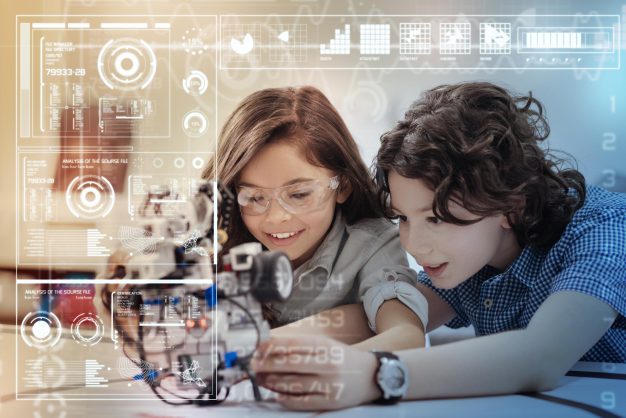
Child Rights and Artificial Intelligence: a growing concern?
While the growing influence of Artificial Intelligence (AI) brings significant opportunities for societal development, the intersection of AI and child rights presents a growing concern.
As AI systems become more integrated into the lives of children, it’s becoming absolutely crucial to explore the potential implications on their rights, as defined by the UN Convention on the Rights of the Child (UNCRC). These implications touch on issues such as privacy, access to education, protection from exploitation, and freedom of expression.
One of the most pressing concerns regarding AI and child rights is privacy. AI systems, especially those used in schools, entertainment platforms, and toys, often collect vast amounts of personal data. This includes not only general information like names and ages but also more sensitive data such as behavioral patterns, location, and even biometric data. This raises questions about how this data is stored, used, and shared.
Children are particularly vulnerable to privacy violations because they may not fully understand the implications of data collection. In 2018, the General Data Protection Regulation (GDPR) was introduced in Europe, mandating stricter privacy rules for minors. However, many countries still lack robust regulations to protect children from the misuse of AI-powered systems. Furthermore, AI-based decision-making systems, such as facial recognition in public spaces or predictive algorithms in social services, may infringe on a child’s right to privacy and autonomy.
AI has the potential to transform education by offering personalised learning experiences, identifying learning gaps, and providing tailored support to students. Educational platforms powered by AI can help bridge gaps in resources and access, particularly in underprivileged regions.
‘The power to transform education’
However, AI can also deepen inequality if its benefits are not distributed equitably. The digital divide remains a significant obstacle for many children, especially in developing countries or marginalised communities. Lack of access to technology means that children in these regions are left behind, exacerbating educational disparities. Furthermore, AI systems used in education can sometimes reinforce biases, providing less accurate or lower-quality recommendations for students based on their background or socioeconomic status.
AI has raised concerns about the potential exploitation and abuse of children in various ways. For example, AI-generated content and ‘deepfake’ technology have been used to create harmful and abusive material involving children. The anonymity and scale of the internet make it difficult for law enforcement agencies to track and prevent the spread of such content. Additionally, AI-powered algorithms in social media and online platforms can expose children to inappropriate content or lead them into harmful online interactions.
Efforts are being made to harness AI to protect children, with some algorithms designed to detect abusive content or monitor online behaviour for signs of grooming or exploitation. While these tools can aid in preventing harm, there’s a need for rigorous regulation and oversight to ensure these systems are both effective and respectful of children’s rights.
‘Complex and multi-faceted’
AI-driven content moderation on social media platforms can impact children’s right to freedom of expression. AI algorithms, designed to remove harmful or inappropriate content, may sometimes mistakenly flag benign content or disproportionately restrict children’s access to information. While protecting children from harmful content is important, it is equally essential to preserve their right to access diverse information sources and freely express their opinions.
There is no doubt that the implications of AI on child rights are complex and multi-faceted. While AI offers opportunities for enhancing children’s education, health, and protection, it also poses significant risks related to privacy, exploitation, and inequality.
Policymakers, tech companies, and child rights advocates must work together to create a legal and ethical framework that prioritises the well-being of children in the AI-driven future. Ensuring that AI is used responsibly and equitably will be crucial in upholding the fundamental rights of every child.




